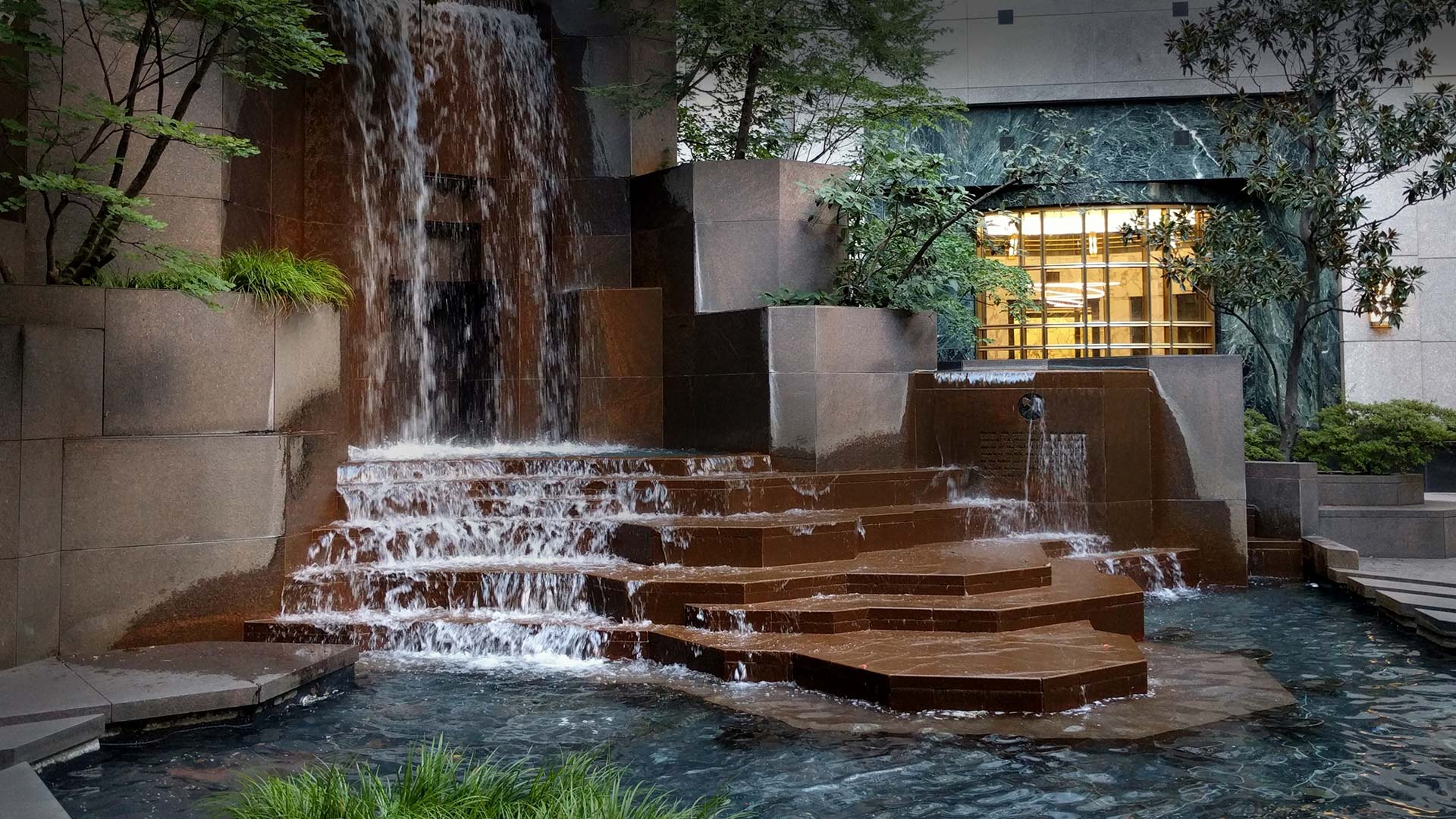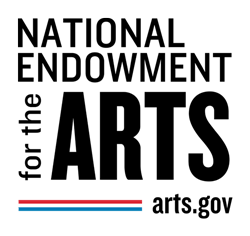Situated at the northwest corner of Trade and Tryon Streets, this 1/3 acre plaza in Uptown (Charlotte’s downtown) has a rich history as an important site for indigenous peoples’ trade routes, the location of significant moments in North Carolinian and United States history, and, most recently, a civic space designed by landscape architect Angela Danadjieva featuring a signature water feature that carves out an oasis within the bustling center of the city. The site of this urban pocket park has seen many uses over more than 300 years, but today, perspectives are divided as to whether the space contributes to or works against the vitality of a thriving Uptown Charlotte - and those involved in Charlotte’s city planning intend to evolve it to better meet its potential as the city’s most central crossroads. In 2019, following a call for proposals, Agency Landscape + Planning, a women-led firm, created a conceptual design that would revitalize the park and fountain while also addressing contemporary needs and uses.
History
Polk Park is located at the west quadrant of Independence Square, formed by the intersection of Trade and Tryon Streets, two four-lane roads that were once the location of an indigenous peoples’ crossroads. By the early 1700s the site was the nexus of two trade routes. European settlers had migrated to the region by the early 1750s, and Thomas Polk, great uncle of James K. Polk (later to become eleventh President of the United States), built his home at the crossroads. Charlotte was incorporated in 1768, and in 1775 the Mecklenburg Resolves, a precursor to the Declaration of Independence, was purportedly produced at this very location. Historic markers and statues throughout Independence Square commemorate this and other significant moments in North Carolinian and American history, including the 1780 Battle of Charlotte.
Though established as Charlotte’s booming center of commerce throughout the nineteenth and early twentieth centuries, by the 1970s a number of skyscrapers were constructed here, and the accompanying skywalks encouraged workers to remain indoors and disengage from the street level. Independence Square became derelict, the surrounding sidewalks mostly deserted. In the late 1980s, as part of an effort to rejuvenate the area, landscape architect Angela Danadjieva was hired to design a vest pocket park for the northwest quadrant of Independence Square.
Danadjieva was born in Sofia, Bulgaria in 1931. Her father was a civil engineer and her mother a music teacher, and her upbringing would influence the interdisciplinary approach to her future practice as an architect and landscape architect. After obtaining a degree in architecture from Bulgaria’s state university in 1960, she went on to work as a set designer and art director for seven years, earning accolades in the film industry. It was during this time that she and then-partner Ivan Tzvetin entered an international design competition, submitting a proposal for a plaza, museum, and monument in Cuba. The project came in second place, and Danadjieva used the prize money to enroll at the Ecole de Beaux Arts in Paris, studying architecture there from 1964 to 1966 while concurrently working for the firm Denieul-Marty-Paoli. In 1965 she and Tzvetin submitted the winning entry for the San Francisco Civic Center, and though the project was never built, they captured the attention of landscape architect Lawrence Halprin, who offered Danadjieva a job at his firm, Lawrence Halprin & Associates, in San Francisco.
 The design team of Danadjieva and Koenig Associates recommended demolition to create an open “living room” for downtown. “The living room will be successful if we design it properly, Danadjieva said. It needs the magic of the four corners.” - The Charlotte Observer, 1987.
The design team of Danadjieva and Koenig Associates recommended demolition to create an open “living room” for downtown. “The living room will be successful if we design it properly, Danadjieva said. It needs the magic of the four corners.” - The Charlotte Observer, 1987.
Beginning in 1967 Danadjieva led more than twenty urban design and city planning projects with Lawrence Halprin & Associates. Her first large-scale project with the firm was the Ira Keller Fountain in Portland, OR (1970), and later Freeway Park in Seattle, WA (1976). After working with Halprin’s office for a decade, Danadjieva broke off to start her own practice with partner Thomas Koenig in 1976, a firm that they continue to maintain today.
Danadjieva’s design for Polk Park, which opened in 1991, draws on themes of her work with Halprin on the West Coast, but also includes elements that are uniquely her own. The focal point of the project is a 30-foot tall central waterfall, with three subordinate falls, that flows into a reflecting pool, a nod to the sculptural fountain installations that Danadjieva designed for the Ira Keller Fountain and at Freeway Park. The waterfall and lush plantings create a microclimate and a respite from some of the noise generated by vehicular traffic and forced air units on neighboring high-rises. Diagonal paving patterns in the hardscape, composed of varying shades of local Piedmont red granite, reinforce the street grid and freedom of movement, drawing pedestrians into the pocket park. In his recent assessment of the site, noted fountain designer James Garland wrote: “The design is neither precisely symmetrical nor emphatically asymmetric, but rather, achieves a kind of architectural/naturalistic poise by balancing both.”
The pyramidal fountain animates the park with its cascades of water and sound and creates a backdrop, while the open plaza in the foreground acts as a stage. Polk Park is evocative of an outdoor “living room” for the city, and has been the setting for many activities from the Thanksgiving Day Parade to farmers markets to pep rallies. On a day to day scale, it is a place where people are meant to gather, away from the surrounding hubbub of Uptown. Danadjieva’s design intent was to visually and physically connect all four corners of Independence Square, activating the historic intersection as a vibrant plaza, but that schematic vision did not come to fruition.

Threat
While the Polk Park fountain remains a beloved icon of Charlotte’s Uptown, the feature is costly to maintain, and its zig-zag design faces code compliance challenges. Meanwhile, the surrounding park has fallen into disrepair. Over the past two decades, the landscape has become cluttered with an accumulation of trees, street furniture, and other extraneous elements, creating physical and visual barriers that contribute to the incoherence of the flow of the space and a lack of connectivity to the surrounding streetscape. At the same time, there are few tables and chairs or other means for people to sit in the park, and the existing landscaping works to barricade easy access, resulting in many pedestrians choosing to circumvent the park altogether.
Polk Park has also suffered from a lack of programming; it is now a space that most people simply pass by, as it appears as a dead end, without regard for the highly designed water feature or opportunities of engagement with the landscape. Despite its prime location and rich history, this small parcel is often overlooked.
In 2019 a Request for Qualifications (RFQ) was put forth by Charlotte Center City Partners (CCCP), in partnership with the City of Charlotte (“the City”), inviting firms to submit proposals to reinvent the park. Per their RFQ, CCCP and the City believe that “…Polk Park can and should be the premier urban public space in Charlotte.” The challenge for the contracted firm, Agency Landscape + Planning, is to evolve the park for twenty-first century use while recognizing its history, both retaining the Danadjieva-designed fountain and components of the existing mature tree canopy and reinventing the surrounding space.
Gina Ford, co-founder and principal at Agency, has noted that at the start of the project there was no widely-shared body of knowledge about Polk Park, its significance, or how the current design came to be. She identifies a “lack of vitality” around the space and its setting, while identifying the opportunity to reflect the vibrancy of Charlotte as the very heart of Uptown. To shift from the problematic to the opportunistic, Ford identifies, the iconic water feature needs to be made resilient, and the spaces behind and around it and the facing plaza must be decluttered and “distilled.”
The original timeline as put forth in the RFQ indicated that construction would begin in March 2020, with project completion projected for July of the same year. Unsurprisingly, major societal events of 2020—the novel coronavirus pandemic and protests concerning racial injustice—have moved the needle on both the timeline and the focus of the project.
Recently, select street closures downtown have facilitated the installation of murals and artwork by Black artists, and there is an opportunity to integrate the Polk Park project within the broader context of the downtown core of Charlotte and its diverse communities, past and present. At Polk Park, the women-led design team—elevating the work of another woman landscape architect—and the significance of BIPOC history at this crossroads can and should converge.
The pandemic has forced urban dwellers to confront the need for inhabitable public space more than ever before. The redesign of Polk Park is an opportunity to activate a critical outdoor space that currently feels inaccessible within this dense part of the city. A revitalized plaza will hopefully see performances, rallies, art displays, and picnics return to the square.
What You Can Do to Help
Help Charlotte City Center Partners (CCCP) realize the concept vision for the park—one that retains and rehabilitates the iconic fountain—and move beyond the design phase to break ground on the project, by submitting letters of support to:
mfloren@charlottecentercity.org
-or-
200 S. Tryon Street, Suite 1600
Charlotte, NC 28202
Contact the Mayor’s office and encourage her to support the thoughtful redevelopment of Polk Park.
Weigh in on CCCP’s ongoing City Center Vision Plan at: https://www.allin2040.com/share-your-ideas
Follow CCCP on Eventbrite or by signing up for their newsletter, to keep informed about upcoming public events related to planning for Uptown and Polk Park.














